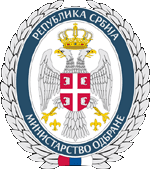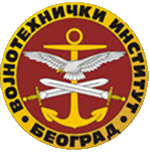|
REPUBLIC OF SERBIA MINISTRY OF DEFENCE
MINISTRY OF DEFENCE Material Resources Sector Defensive Technologies Department
|
MEMS/NEMS sensors of chemical and biological agents: Applicability of different models for steady-state analysis of sensor time response and noise
Institute of Chemistry, Technology and Metallurgy - CMT, University of Belgrade, Belgrade, Serbia, ijokic@nanosys.ihtm.bg.ac.rs katarina radulović Institute of Chemistry, Technology and Metallurgy - CMT, University of Belgrade, Belgrade, Serbia, kacar@nanosys.ihtm.bg.ac.rs miloš frantlović Institute of Chemistry, Technology and Metallurgy – CMT, University of Belgrade, Belgrade, Serbia, frant@nanosys.ihtm.bg.ac.rs zoran djurić Institute of Technical Sciences of SASA, Serbian Academy of Sciences and Arts, Belgrade, Serbia, zoran.djuric@itn.sanu.ac.rs predrag m. krstajić Institute of Chemistry, Technology and Metallurgy - CMT, University of Belgrade, Belgrade, Serbia, pkrstajic@nanosys.ihtm.bg.ac.rs
Abstract: We analyze the time response of MEMS/NEMS sensors of chemical and biological agents and its noise, by using two mathematical models. One of them is commonly used in the literature on MEMS/NEMS adsorption-based chemical and biological sensors, while the other one, which is more elaborate, and takes into account additional relevant physical processes, has been developed by us. We also investigate the limits of applicability of the two models as a function of the target substance concentration, especially having in mind the decrease of the minimal detectable concentration in the new sensor generation. Keywords: chemical sensor, biosensor, time response, adsorption-desorption noise, steady-state analysis.
|
|||||
|
||||||

